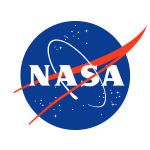Small Business Innovation Research/Small Business Tech Transfer
SAVDS - A Decision Support Tool (DST) Enabling UAV Flights Beyond Visual Line-Of-Sight
Project Description

The Sense-and-Avoid Display System (SAVDS®) represents a technology that was developed to address the mid-air collision risk for low-flying Unmanned Aerial Vehicles (UAVs). Over a 4-week period in July-August 2013, SAVDS was used as a decision support tool (DST) for NASA's Marginal Ice Zone Observations and Processes EXperiment (MIZOPEX) Project in northern Alaska. Integrated with a Thales-Raytheon Systems (TRS) Sentinel AN/MPQ-64 (FRP-5) radar data feed, SAVDS was housed in a UAV Ground Control Station and served the time-critical DST function of showing the real time location and altitude of NASA-supported UAVs and other airborne vehicles within and around a pre-defined safe separation transit corridor. It was within this operational framework that SAVDS served as a DST which enabled the first FAA-approved series of NASA-supported UAV science flights in the domestic National Airspace System without ground-based or chase plane-based visual observers. In this Phase 1 SBIR, SAVDS, Inc. seeks to further refine and improve its functionality by performing a feasibility test involving detailed analyses of SAVDS log files from the MIZOPEX Project and other past UAV missions equipped with the Sentinel radar. Advancements to SAVDS, as here set forth in this SBIR Phase I proposal, are envisioned as enabling future NASA Earth Science Missions that will ultimately involve fully autonomous UAVs. The long-term goal is to embed the data processing capabilities and sensor-and-avoid algorithms of SAVDS in the onboard flight safety systems of UAVs that will be collecting airborne earth science data beyond the range of visual observers.
More »
Anticipated Benefits
The amount of high-resolution airborne Earth observation data that could be acquired using small low-flying UAVs is enormous. Over the next decade, it is envisioned that the future of UAV flight operations on the north slope of Alaska and other comparable locations will increase significantly for resource exploration and science investigations related to global climate change. Systematic high resolution monitoring of glacial ice pack dynamics and gas emissions from geothermal areas are other examples of the type of beyond line-of-sight UAV missions that could be readily integrated with NASA's current Earth science research activity. Within this framework, an upgraded version of SAVDS could serve as an important decision support tool (DST). Small low-flying long duration UAVs equipped with leading-edge payloads will only reach their full potential of supporting NASA's Earth science research goals when they can fly beyond the line-of-sight of visual observers.
The primary commercialization strategy that SAVDS, Inc. plans to pursue is offering SAVDS as a decision support tool (DST) to UAV service providers who operate small low-flying UAVs and plan to operate in the National Airspace System and abide by FAA regulations. It is these UAV service providers who will be providing high resolution airborne imagery to agriculturalists as well as Government agencies such as the Department of Homeland Security, FEMA, the U.S. Forest Service, and the Offices of Emergency Services. High resolution airborne imagery that improves food production and water use efficiency addresses a near-term agricultural need, particularly in the state of California. Natural disasters, forest fires, and search-and-rescue operations are examples of the type of time-critical applications that will require the utilization of small low-flying rapidly-deployable UAVs capable of safely flying beyond visual line-of-sight. Another societal benefit of SAVDS serving as a critically important DST would be the future use of small UAVs for the time-critical delivery of medical supplies in high density urban environments where takeoff and landing, and non-linear flight lines will be a major flight safety challenge. More »
The primary commercialization strategy that SAVDS, Inc. plans to pursue is offering SAVDS as a decision support tool (DST) to UAV service providers who operate small low-flying UAVs and plan to operate in the National Airspace System and abide by FAA regulations. It is these UAV service providers who will be providing high resolution airborne imagery to agriculturalists as well as Government agencies such as the Department of Homeland Security, FEMA, the U.S. Forest Service, and the Offices of Emergency Services. High resolution airborne imagery that improves food production and water use efficiency addresses a near-term agricultural need, particularly in the state of California. Natural disasters, forest fires, and search-and-rescue operations are examples of the type of time-critical applications that will require the utilization of small low-flying rapidly-deployable UAVs capable of safely flying beyond visual line-of-sight. Another societal benefit of SAVDS serving as a critically important DST would be the future use of small UAVs for the time-critical delivery of medical supplies in high density urban environments where takeoff and landing, and non-linear flight lines will be a major flight safety challenge. More »
Project Library
Primary U.S. Work Locations and Key Partners
| Organizations Performing Work | Role | Type | Location |
|---|---|---|---|
| SAVDS, Inc. | Lead Organization | Industry | Mountain View, California |
 Ames Research Center
(ARC)
Ames Research Center
(ARC)
|
Supporting Organization | NASA Center | Moffett Field, California |
Primary U.S. Work Locations
-
California

Suggest an Edit
Recommend changes and additions to this project record.

